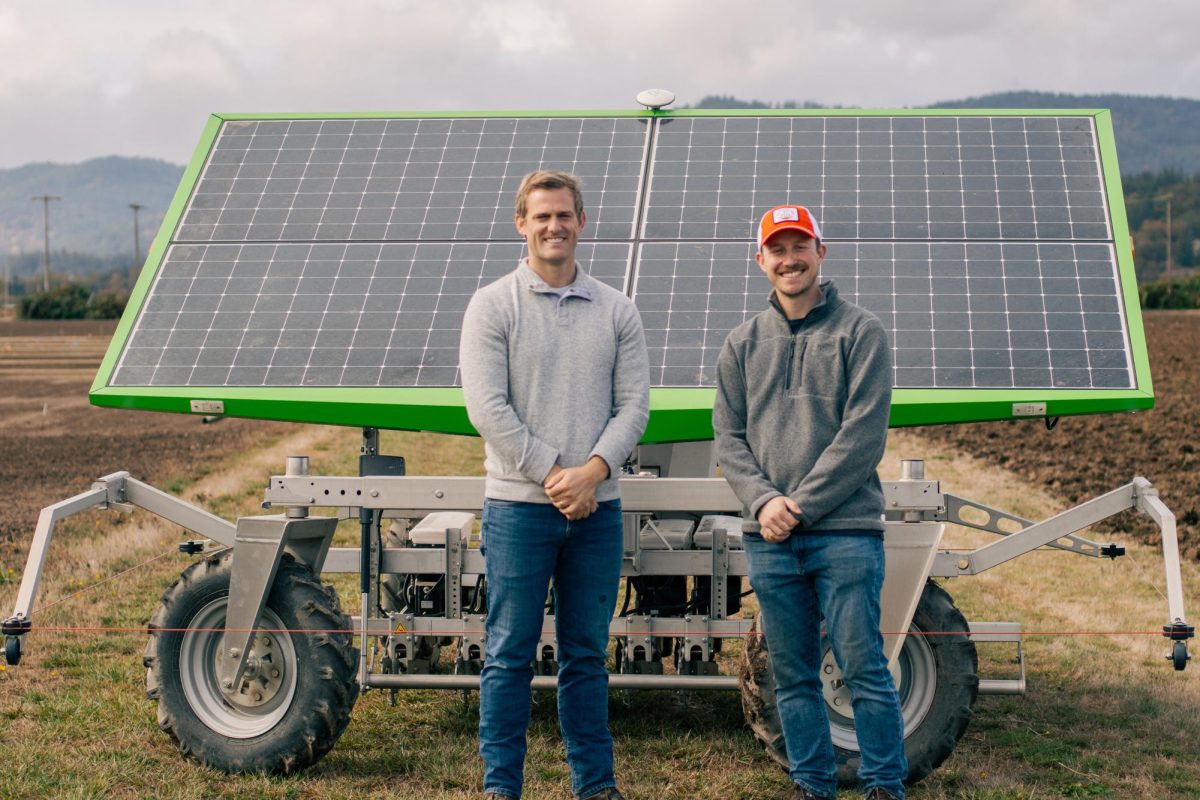After pondering what the future of farming would look like, Oregon State University agriculture professors and students have been given the opportunity to witness it with the adoption of a new farming machine, the FarmDroid.
Originally manufactured and based in Denmark, the FarmDroid is a solar-powered cropping tool, with its primary feature being unmanned yet reliable crop management. Starting at about $70,000 to $90,000, the machine is set to be made accessible to farmers across the world after being tested by OSU.
The four large solar panels on the top of the droid ensure a 24-hour battery life, making it effective over long periods of time and a reliable, fully automated tool. The FarmDroid prides itself on using renewable energy, receiving all its power from the sun.
The FarmDroid has two premier features. The first is seeding, with the droid promising precision and high productivity when it seeds. The robot is equipped with sensors that help it detect the best and most efficient way to seed a certain crop and/or field, with the droid being tested on over 50 different types of crops and vegetables.
The second feature is weeding. Armed with several rows of small weed-eating blades, the machine can be lowered or raised according to the crop/field that it is managing. This not only makes sure that you are getting the weeds and their roots effectively removed from the ground, but also can prevent harm to farmers and their farmhands, who suffer yearly injuries in the thousands at the hands of power tools.
The FarmDroid is automated and can be controlled by a mobile device, making it easy to manage when away, and bringing a better sense of control to its users.
Pete Berry, assistant professor at the College of Agriculture, and one of the overseeing members for the FarmDroid in Corvallis said, “So far it’s doing great with the new season, we have two fields it’s surveying, a turnip field, a crimson clover field and it has been helping with the tall fescue grass field.”
“Its main test has been these three species and the weather,” Berry said when asked on how the droid is handling being in the Oregon fields. “It was a very dry summer, so to test it now during the wet season is going to be key to keep track of now.”
Andrew Branka, who has been operating the droid, explained how the weeding and seeding functions work.
“It uses these small disks, that it will then expel the seeds onto the field, and it knows exactly where to add and spread them,” Branka said. “The bottom of the droid is customizable, so we can pull it out and then add the weed-eating knives to the bottom and then have it, when the grass is ready, maintain that as well.”
The droid will remain in Corvallis for at least the next two growing seasons before future moves are made, with several other FarmDroids soon to be used across the world.


















































































![Newspaper clipping from February 25, 1970 in the Daily Barometer showing an article written by Bob Allen, past Barometer Editor. This article was written to spotlight both the student body’s lack of participation with student government at the time in conjunction with their class representatives response. [It’s important to note ASOSU was not structured identically to today’s standards, likely having a president on behalf of each class work together as one entity as opposed to one president representing all classes.]](https://dailybaro.orangemedianetwork.com/wp-content/uploads/2025/03/Screenshot-2025-03-12-1.00.42-PM-e1741811160853.png)
























